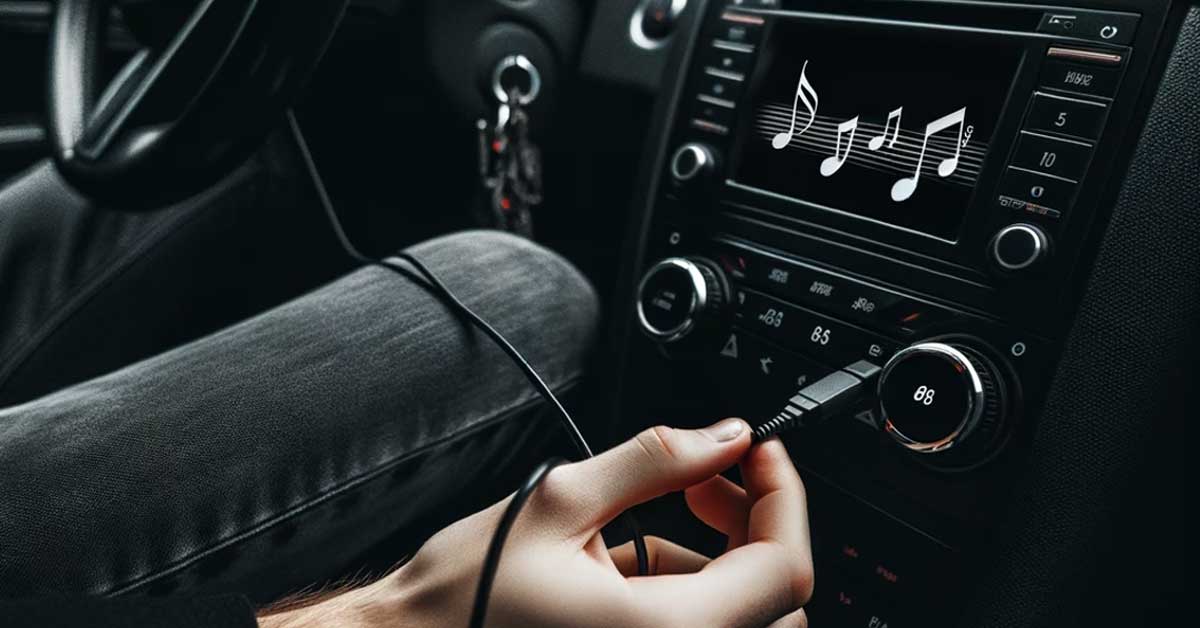Key Takeaways:
- 1. BESIGN Bluetooth Ground Loop Noise Isolator – A simple, cost effective option for those who prefer simplicity. Utilizes a standard 3.5mm auxiliary input so it’s highly compatible with almost any device.
- 2. Smof Upgraded Ground Loop Noise Isolator – Quite similar to the BESIGN, but with an improved design. Rather than using a permanently attached AUX cable, it’s removable and replaceable. It’s also slightly more-compact!
- 3. InstallGear Ground Loop Noise Isolator – Uses RCA cables for an under-the-hood or inside your upgraded car/home audio system. Excellent built quality adds to its high degree of effectiveness.
- 4. Pyle Compact Mini Hum Eliminator Box – Ideal for those who need a noise isolator for their musical instruments or professional audio equipment. Offers 1/4″ TRS phone and XLR inputs/outputs on 2-channels to eliminate 60Hz hum.
- Need some help? Check our FAQs about ground loop noise isolators if you’re new to the topic of eliminating buzzing and humming from your audio systems.
In the world of audio, there’s a pesky villain that often goes by the name of “ground loop noise.” This unwanted guest, characterized by a low-frequency hum or buzz, can detract from the clarity of your sound system, turning what should be a euphonic experience into an auditory annoyance.
Whether you’re a professional audiophile, a home theater enthusiast, or just someone trying to enjoy your favorite tunes without disruption, finding a solution to this issue is crucial. Enter ground loop noise isolators. These unsung heroes of the audio world work behind the scenes, ensuring your sound remains as pristine as intended.
In this article, we explore the world of ground loop noise isolators, showcasing the top choices to ensure a hum-free audio experience. Embark with us on this quest to eliminate the unwanted noise and unveil the pure essence of sound.
1. BESIGN Bluetooth Ground Loop Noise Isolator

Key Takeaways:
- Eliminating 100% of buzzing in our car and at home.
- Cheap but effective.
- Uses a 3.5mm auxiliary (headphone) jack.
- Permanently attached auxiliary cable.
During our quest to find the ideal solution for those pesky ground loop noises, we stumbled upon the BESIGN Bluetooth Ground Loop Noise Isolator.
It caught our eye due to its universal compatibility, boasting a versatile design that works seamlessly with any 3.5mm auxiliary input. Whether you’re dealing with cars, smartphones, tablets, or speakers, this little device promises compatibility, and it certainly delivers.
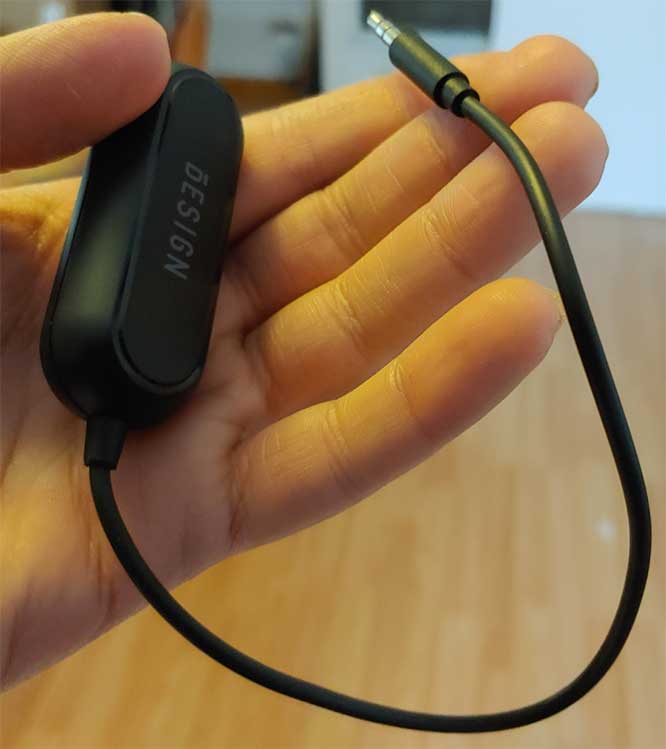
Our first test drive with the BESIGN was in the car. Historically, this environment has been a breeding ground for those frustrating buzzing noises, especially when juggling different devices and chargers.
To our delight, the BESIGN isolator completely eradicated the noise. It performed just as impressively when we transitioned the test to our home audio setup, proving its worth in diverse audio environments.
We really appreciate the isolator’s user-friendly nature. It’s purely plug-and-play, eliminating the need for any complicated setups or configurations. The ease of use is further complemented by its portability.
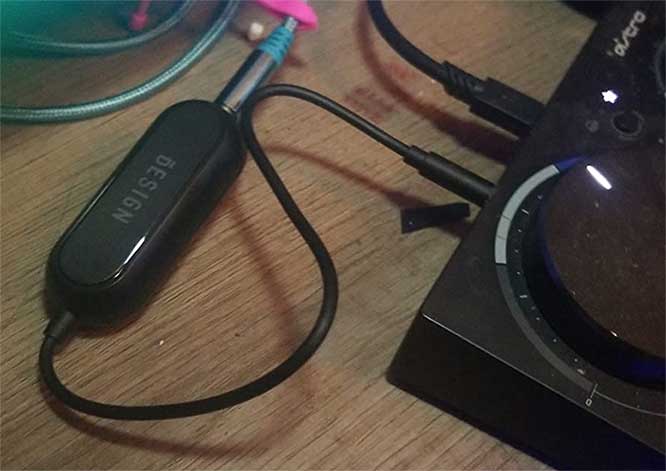
Measuring just shy of 4″ in length and weighing a tad over an ounce, it’s both compact and light. At first glance, the 9″ cord might seem minimalistic, but in practice, it was more than adequate for our needs, striking a balance between flexibility and space conservation.
While its lightweight construction gives it a somewhat cheap feel to the touch, it’s important not to mistake this for inefficiency. The BESIGN isolator might not boast the heaviest build, but it packs a punch in terms of performance.
And when you factor in the affordability – ringing in at around $10 – it becomes clear why this product is a frontrunner in the world of ground loop noise isolators. It’s a budget-friendly solution without compromising on the quality of sound.
2. Smof Upgraded Ground Loop Noise Isolator

Key Takeaways:
- Even smaller/more compact than the BESIGN at 2.36″ long.
- Highly effective at fully eliminating any ground noise.
- Removable auxiliary cord.
- Backed by a 24-month warranty.
Navigating the complex landscape of ground loop noise solutions, we recently had the pleasure of testing the Smof Upgraded Ground Loop Noise Isolator. To say we were impressed would be an understatement. As ardent seekers of clear, undistorted sound, this device proved to be an invaluable addition to our audio arsenal.
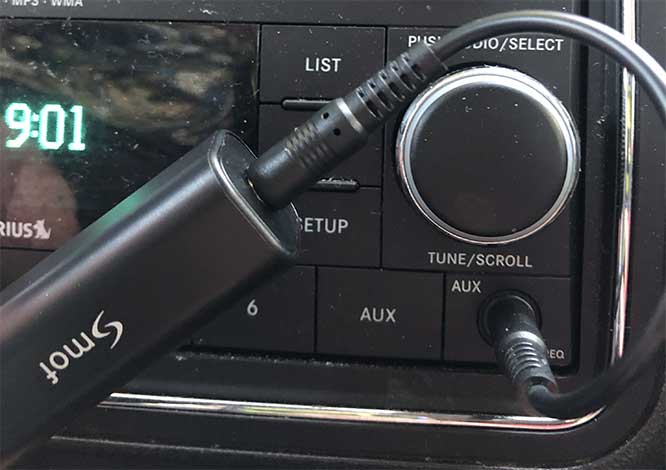
One of the most striking aspects of the Smof isolator is its compact form factor. Measuring at a mere 2.36″ in length and weighing just over an ounce, it’s even more petite than the BESIGN model, making it an ideal companion for on-the-go audio setups. Yet, despite its small stature, it doesn’t compromise on its primary function: eliminating those unwelcome hisses, hums, and other ground loop noises that can plague audio.
In terms of design, the Smof isolator showcases a thoughtful departure from convention. By opting to forgo a permanently attached auxiliary cord in favor of aux inputs on both ends, Smof has addressed a common pain point for users. Cables, often the first to deteriorate over time, can now be easily replaced. That said, this enhances the device’s longevity and ensuring a consistently high-quality connection.
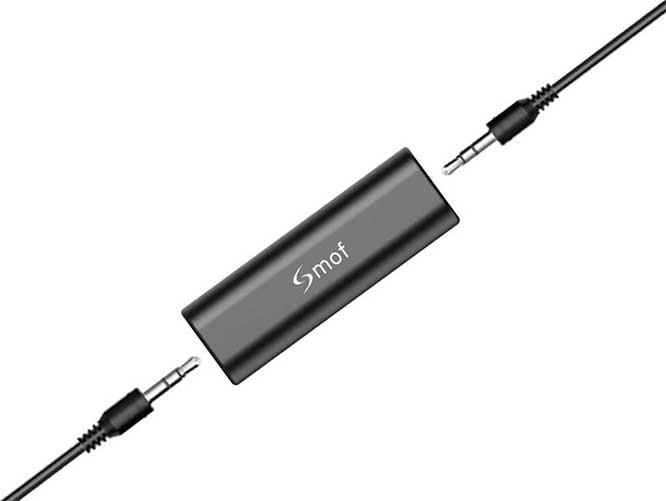
The 6-inch auxiliary cord provided with the isolator struck us as the ideal length, offering both convenience and flexibility. Whether integrating the Smof isolator into a car sound system, a home theater, a laptop, or a tablet, it consistently performed, proving its adaptability across various audio environments.
Considering its top-notch performance and features, the price point pleasantly surprised us. Priced equivalently to the BESIGN at around $10, it’s a testament to the value it offers. And, for those wary of the device’s durability given its cost-effectiveness, the generous 24-month warranty should put any reservations to rest.
3. InstallGear Ground Loop Noise Isolator
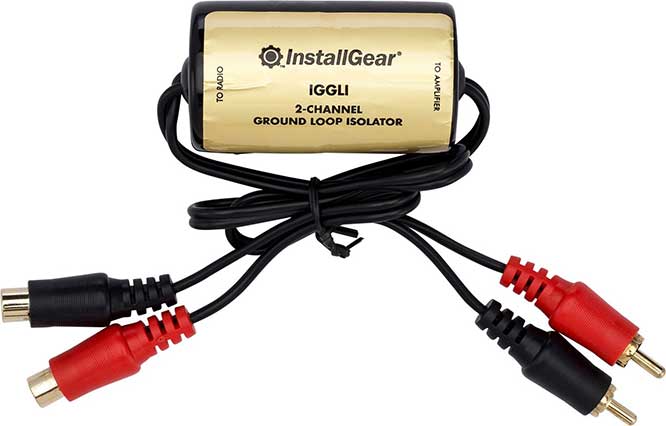
Key Takeaways:
- Utilizes RCA cables/input rather than 3.5mm auxiliary.
- Effectively reduces alternator and engine whine noise in vehicles.
- Works equally well for home audio setups.
- Excellent build quality.
For those in search of crystal-clear audio, ground loop noise can be the proverbial thorn in one’s side. With this in mind, we recently experimented with the InstallGear Ground Loop Noise Isolator. It’s another unique piece of equipment designed for discerning audiophiles. Catering to those who have a system that utilizes RCA cables over a standard 3.5mm auxiliary, it’s a refreshing alternative in a sea of common isolators. One end goes to the amp, the other goes to the radio/audio system.
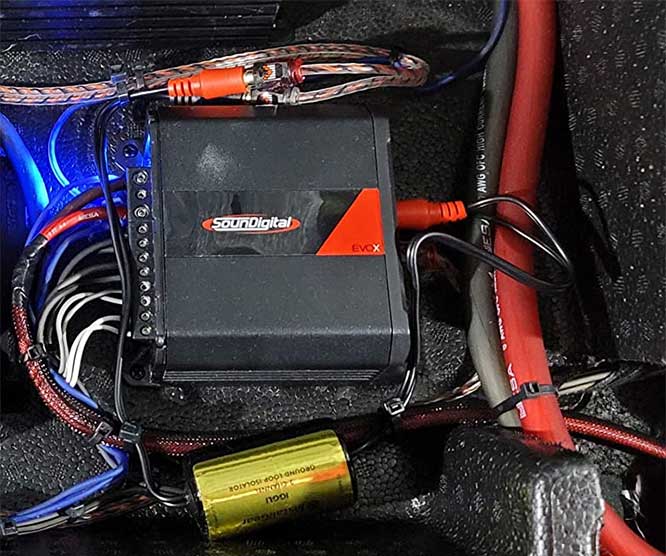
Our hands-on tests painted a convincing picture of its effectiveness. Plagued with the persistent alternator whine and engine noise that many car audio enthusiasts are all too familiar with, we tested the InstallGear isolator across three distinct vehicles.
The outcome? An impeccably clear soundstage devoid of those intrusive noises. Beyond the car environment, the InstallGear isolator seamlessly integrated into our home audio setup, reinforcing its multifaceted application. Excellent results all the way around.
Though not as diminutive as the BESIGN or Smof isolators, the InstallGear’s compact design – measuring 4.96″ x 4.69″ x 2.2″ and weighing just under 4 ounces – ensures that it nestles comfortably in most spaces, be it behind a car’s dashboard or nestled amongst home audio equipment.

Its footprint, however, does not undermine its build quality. Holding it, one gets a sense of robustness, with the device exuding a solidity and durability that’s reassuring, especially for those keen on long-term use.
From a pricing perspective, the InstallGear isolator doesn’t break the bank. At just under $20, its performance offers excellent value for money. While slightly more expensive than some of its counterparts, the incremental cost is justified by its superior build quality and consistent performance, making it a worthy investment for those prioritizing sound clarity.
4. Pyle Compact Mini Hum Eliminator Box
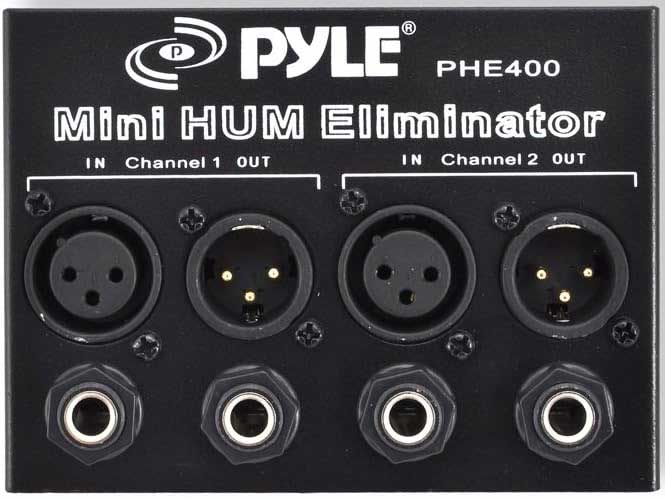
Key Takeaways:
- Highly effective in eliminating 60Hz audio hum.
- 1/4″ TRS phone and XLR inputs/outputs on 2-channels
- Ideal for home audio, P/A systems, home theater, musical instruments.
- Makes it impossible for the signal lines to pick up the AC noise in the first place.
In the world of audio, every hum, buzz, and unwanted noise can make the difference between mediocrity and perfection. Eager to achieve the latter, we recently incorporated the Pyle Compact Mini Hum Eliminator Box into our audio setup, and the results were noteworthy.
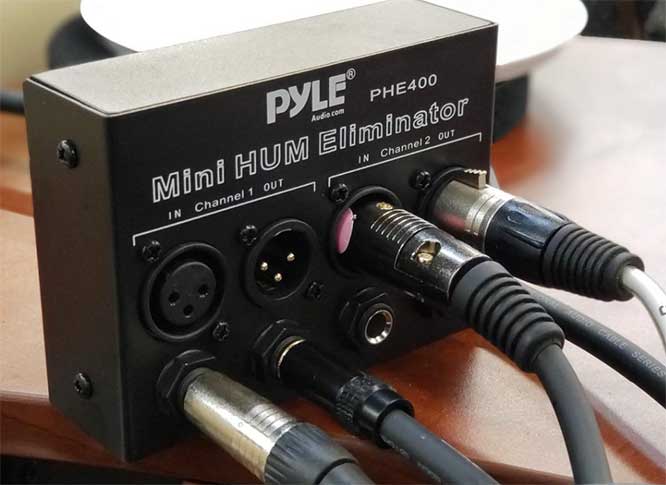
This is a 2-channel noise isolator designed to combat the persistent problem of 60Hz AC hum, a frequent culprit of ground loops in audio systems. In our tests, the device worked impeccably, neutralizing the hum and providing an unblemished sound profile. What makes the Pyle particularly intriguing is its ability to break the ground loop securely. By ensuring that the signal lines are insulated from picking up AC noise from the onset, it offers a preemptive solution rather than a mere fix.
The versatility of the Pyle Hum Eliminator Box is also commendable. From home audio systems to professional P/A setups, home theaters, and even musical instruments, it’s a device that finds relevance across various audio environments. In addition, it’s a passive unit, which means it operates without the need for power.
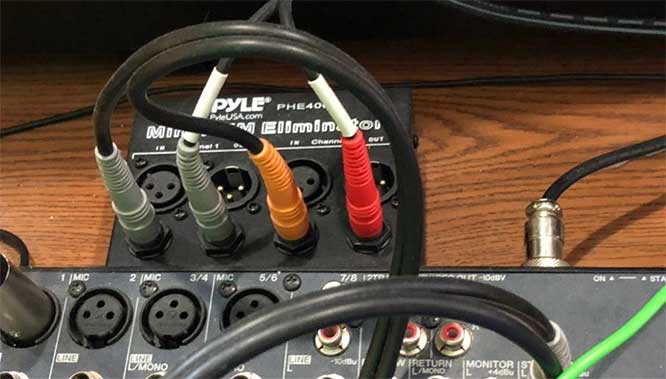
The inclusion of both 1/4-inch TRS phone and XLR inputs and outputs across 2-channels offers flexibility for multiple connection types. Its ability to seamlessly convert unbalanced signals to balanced ones without any signal degradation is a significant advantage. That said, it ensures optimal audio quality regardless of the input source. Whether working with mono or stereo connections, the Pyle handles them with ease.
On the portability front, while the Pyle isn’t the most compact device on the market, its design is still moderately portable. Weighing in at just over 14 ounces and with dimensions of 6.25″ x 7.25″ x 2.5″, it can be comfortably integrated into most audio setups without being overly obtrusive.
Ground Loop Noise Isolators FAQs
What is a ground loop noise isolator?
A ground loop noise isolator is a device that prevents unwanted humming or buzzing noises in audio systems, often caused by electrical ground loops. It works by breaking the ground loop, ensuring a clear, interference-free audio signal.
Why would I need a ground loop noise isolator?
If you’re experiencing a persistent humming or buzzing noise in your audio system, especially when multiple devices are connected, a ground loop might be the culprit. An isolator can effectively eliminate this noise, improving audio clarity.
Will using a ground loop noise isolator degrade audio quality?
Quality ground loop noise isolators are designed to remove unwanted noises without compromising the actual audio signal. In many cases, users report enhanced audio clarity after using them, as interference is eliminated.
Do ground loop noise isolators require external power?
Most isolators are passive devices, meaning they don’t require external power. They function by altering the pathway of the audio signal to prevent noise. However, some models might need power, so always check product specifications.
Is installation of a ground loop noise isolator complicated?
Most ground loop noise isolators are plug-and-play devices, making installation straightforward. Simply connect them between your audio source and output device, and they’ll start working immediately.
Meet Ry, “TechGuru,” a 36-year-old technology enthusiast with a deep passion for tech innovations. With extensive experience, he specializes in gaming hardware and software, and has expertise in gadgets, custom PCs, and audio.
Besides writing about tech and reviewing new products, he enjoys traveling, hiking, and photography. Committed to keeping up with the latest industry trends, he aims to guide readers in making informed tech decisions.

